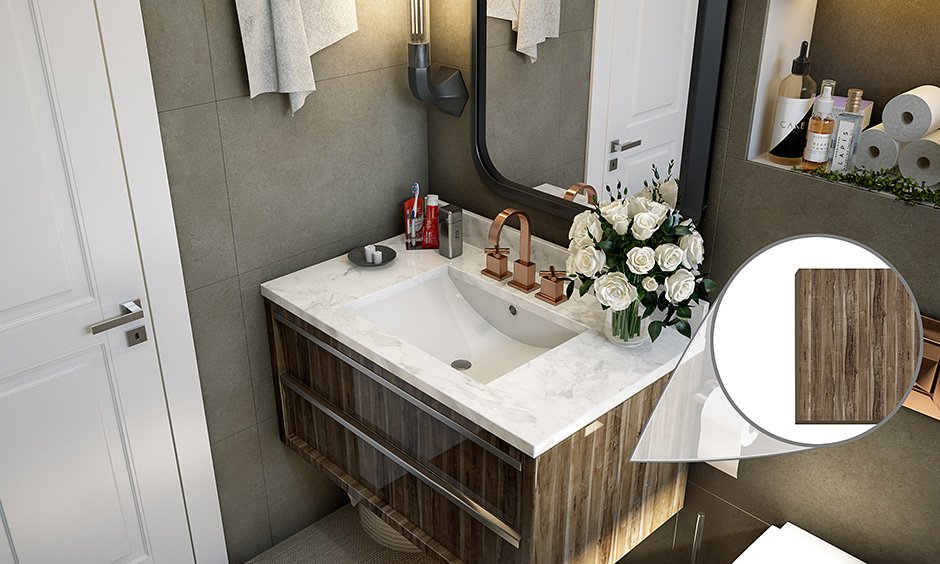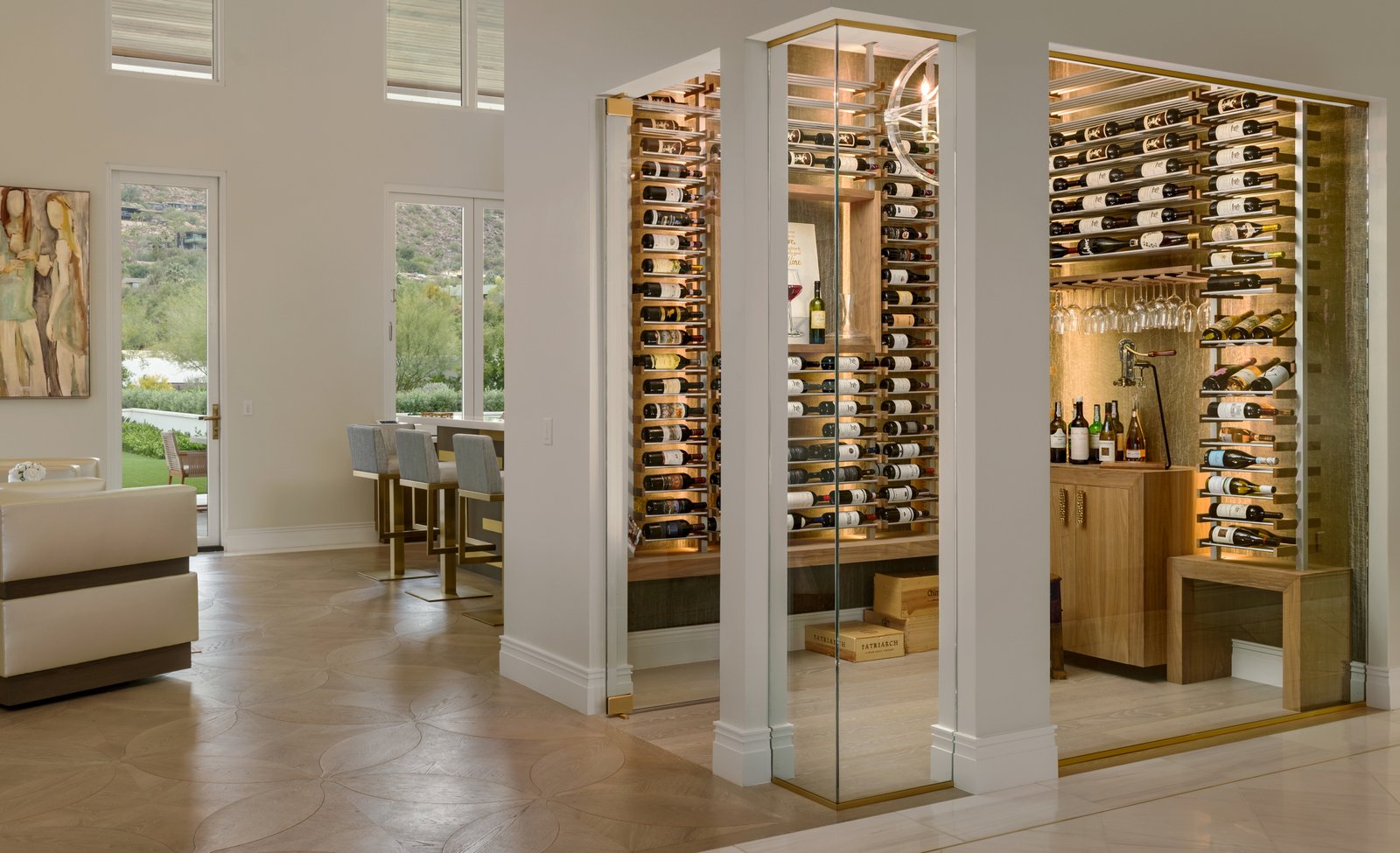Introduction:
When renovating your bathroom, choosing the right cabinets is not just a matter of storage. It’s about blending functionality with style, creating a space that reflects your personal taste while ensuring efficiency. Cabinets are not merely functional units; they significantly contribute to the aesthetic appeal of your bathroom. This guide aims to navigate you through the process of selecting the best bathroom cabinets, ensuring you make choices that are not only practical but also enhance the overall design of your bathroom.

Understanding Your Financial Parameters
Before embarking on your bathroom renovation journey, establishing a budget is crucial. It sets the groundwork for your project, enabling you to make informed decisions without overspending. Here are a few tips to help you budget wisely:
- Assessment: Evaluate the overall scope of your renovation. Determine what needs to be replaced and what can be refurbished.
- Prioritize: Allocate more funds to essential upgrades that add value and functionality.
- Research: Shop around for cabinet options. Compare prices from different suppliers to ensure you’re getting the best deal.
- Hidden Costs: Be mindful of potential hidden costs. Always set aside a portion of your budget for unexpected expenses.
- Quality vs. Cost: Finding a balance between quality and cost is key. Opt for cabinets that offer durability without breaking the bank.
By carefully planning your budget, you can ensure that your bathroom renovation is both cost-effective and high-quality, providing you with a space that you will enjoy for years to come.
This initial section has set the stage for our comprehensive guide on choosing the right bathroom cabinets. Stay tuned for the next steps, where we will dive into planning your bathroom layout, measuring your space accurately, and much more, to ensure you are well-equipped to make the best decisions for your bathroom renovation project.

Designing for Efficiency and Style
The layout of your bathroom is a critical component of any renovation project. It dictates the flow and functionality of the space, affecting everything from the placement of cabinets to the ease of movement. Here are some tips for planning your bathroom layout effectively:
Space Utilization: Consider how you use your bathroom on a daily basis. Allocate space for cabinets and fixtures according to your personal routine and preferences.
Traffic Flow: Ensure there is enough clearance for door openings and a comfortable passage. A well-thought-out traffic flow can significantly enhance the usability of your bathroom.
Functional Zoning: Organize your bathroom into distinct zones for bathing, vanity, and toilet. This helps in deciding where to place cabinets for easy access to stored items.
Flexibility for Future Changes: Opt for a layout that can accommodate future modifications. This foresight can save you from costly renovations down the line.
Professional Consultation: If possible, consult with a professional designer. Their expertise can help you avoid common pitfalls and optimize your space for both efficiency and aesthetics.
A well-planned layout not only ensures a functional bathroom but also provides a foundation for aesthetic enhancements. By considering these aspects, you can create a space that meets your needs while allowing for creative expression through your choice of cabinets and fixtures.
Having covered the importance of a strategic layout, our next focus will be on the precise art of measuring your bathroom. This crucial step ensures that the cabinets you choose fit perfectly, complementing both the functionality and style of your newly renovated bathroom.

The Art of Measuring Your Space
Accurate measurements are the foundation of any successful bathroom renovation project. Ensuring that your cabinets fit perfectly not only enhances the functionality of your space but also its overall aesthetics. Here’s how to measure your bathroom accurately:
- Wall-to-Wall Measurements: Start by measuring the length of each wall. For accuracy, measure at two points: once close to the floor and once close to the ceiling. Use the smaller measurement if there’s a discrepancy due to uneven walls.
- Account for Fixed Objects: Measure the space occupied by existing fixtures, windows, and doors. This helps in planning the placement of new cabinets around these fixed elements.
- Height Considerations: Don’t forget to measure the height of the room. Knowing the ceiling height is crucial when considering tall cabinets or overhead storage.
- Check for Plumbing: Identify the locations of existing plumbing fixtures. The placement of sinks, showers, and toilets can influence where cabinets can be positioned.
- Clearance Spaces: Ensure there’s enough space for cabinet doors and drawers to open without obstruction. This includes considering room for movement and access within the bathroom.
- Use Graph Paper: For a visual representation, draw your bathroom layout on graph paper, marking the measurements accurately. This can help in visualizing the space and planning more effectively.
By taking the time to measure your bathroom accurately, you create a solid foundation for selecting cabinets that will fit seamlessly into your space, optimizing both functionality and style.
With precise measurements in hand, the next step in our guide will address solving storage solutions, ensuring that your new bathroom cabinets meet all your storage needs effectively.
If you’re satisfied with this guidance on measuring your space, let’s move forward to exploring how to tailor storage solutions to your specific needs. Please let me know if there are any adjustments you’d like before we proceed.
Tailoring Storage to Your Needs
The right storage solutions in a bathroom can make a significant difference in maintaining a clutter-free and organized space. Here’s how to tailor storage solutions to meet your specific needs:
- Assess Your Storage Needs: Take inventory of what you store in your bathroom. Consider everything from towels and toiletries to cleaning supplies. This assessment will guide the size and type of cabinets you need.
- Maximize Vertical Space: Utilize the vertical space in your bathroom for storage, especially if the floor space is limited. Tall cabinets and open shelving can store items without taking up much room.
- Customize Internal Storage: Opt for cabinets with adjustable shelves, drawers, and organizers. Customizable storage allows you to adapt the space inside your cabinets to fit your items neatly.
- Incorporate Multipurpose Cabinets: Consider cabinets that serve dual functions, such as a mirrored medicine cabinet that provides storage while also serving as a mirror.
- Leave Room for Growth: Choose storage solutions with a bit more capacity than your current needs. This foresight ensures that you have space to accommodate future purchases and avoids overcrowding.
- Evaluate Accessibility: Place frequently used items at arm’s reach and lesser-used items higher up or in deeper storage. This strategy enhances the functionality of your storage solutions.
By thoughtfully planning your storage solutions, you can ensure that your bathroom remains a functional, organized, and serene space. The key is to tailor these solutions to your specific needs, ensuring every item has a designated place.
As we’ve now addressed the practical aspects of planning and measuring your space and solving your storage needs, our next guide section will delve into selecting the quality grade of cabinets. This decision will significantly influence the durability, aesthetics, and budget of your bathroom renovation.
Selecting the Quality Grade of Cabinets
The quality of your bathroom cabinets can significantly impact both their longevity and your overall satisfaction with the renovation. Understanding the differences between the four main grades of cabinets will help you make an informed choice that suits your needs and budget:
- Ready-to-Assemble (RTA): RTA cabinets are the most budget-friendly option. They come in pre-sized modules with a range of standard dimensions and finishes. While they offer cost savings, customization is limited, and assembly can be time-consuming.
- Stock Cabinets: A step up from RTA, stock cabinets are pre-manufactured in a limited range of sizes and styles. They offer a balance between cost and quality, with a bit more durability and finish options than RTA cabinets.
- Semi-Custom Cabinets: These cabinets provide a broader selection of styles, sizes, and finishes. Semi-custom cabinets allow for some modifications to fit your space better, offering a good mix of customization and cost.
- Custom Cabinets: For the ultimate in personalization and quality, custom cabinets are designed and built to your specific requirements. This option allows for the most flexibility in terms of materials, finishes, and configurations but comes at a higher price point.
When selecting the grade of your bathroom cabinets, consider the following:
- Budget vs. Value: Determine how much of your budget you’re willing to allocate towards cabinets, keeping in mind the value of durability and customization.
- Longevity: Higher quality cabinets may come with a higher upfront cost but can be a more cost-effective choice in the long run due to their durability.
- Aesthetics and Functionality: Choose cabinets that not only look good but also meet your functional needs. Consider the storage space, ease of access, and the type of items you need to store.
By carefully considering these factors, you can select the quality grade of cabinets that best suits your renovation goals, ensuring your bathroom is both beautiful and functional.
Next, we’ll explore how to express your style through cabinets, ensuring your bathroom reflects your personal aesthetic while complementing your home’s architecture.
Expressing Your Style Through Cabinets
The cabinets you choose are a reflection of your personal style and play a significant role in the overall ambiance of your bathroom. Here’s how to ensure your cabinet selection enhances your space aesthetically:
- Understand Your Style: Begin by identifying your preferred style. Are you drawn to modern and minimalist designs, or do you favor a more traditional or rustic look? Understanding your aesthetic preference is key to selecting cabinets that resonate with your taste.
- Consider the Home’s Architecture: Your bathroom cabinets should complement the architectural style of your home. For instance, sleek, flat-front cabinets may suit a contemporary home, while paneled doors with intricate detailing would be more at home in a traditional setting.
- Color and Finish: The color and finish of your cabinets can dramatically affect the look and feel of your bathroom. Lighter colors can make a small space feel larger and brighter, while darker hues can add depth and sophistication. Consider the overall color scheme of your bathroom when selecting your cabinets.
- Hardware as an Accessory: Think of cabinet hardware as jewelry for your bathroom. Selecting the right knobs, pulls, and handles can accentuate your style and add a personal touch to the space.
- Mix and Match: Don’t be afraid to mix styles for a unique look. For example, combining a traditional cabinet design with modern hardware can create an eclectic style that is uniquely yours.
- Seek Inspiration: Look for inspiration in design magazines, online resources, and showrooms. Seeing how different styles are implemented can help you refine your aesthetic and make informed decisions.
By carefully selecting your bathroom cabinets, you can ensure they not only meet your functional needs but also express your personal style, contributing to a cohesive and attractive bathroom design.
With the aesthetic aspects covered, our next focus will be on choosing the right materials and finishes for your cabinets, ensuring durability and style in the humid environment of your bathroom.
Choosing the Right Materials and Finishes
In the unique environment of a bathroom, where humidity and moisture are constant, selecting the right materials and finishes for your cabinets is crucial for both durability and style. Here’s how to make choices that ensure longevity and enhance your bathroom’s design:
- Understand Material Options:
– Solid Wood: Offers warmth and natural beauty but may warp or expand in humid environments unless properly sealed and maintained.
– Plywood: Provides a sturdy base for veneers and laminates, with better resistance to moisture than solid wood.
– MDF (Medium Density Fiberboard): An affordable and smooth option, ideal for painted finishes. It’s more resistant to humidity compared to solid wood.
– Laminate: A budget-friendly choice that stands up well to moisture and comes in a variety of colors and patterns.
– Thermofoil: A vinyl film applied over MDF, offering moisture resistance and available in several designs, including those that mimic wood grain. - Choose Suitable Finishes:
– Look for finishes that are specifically designed for use in bathrooms, offering resistance to moisture and easy cleaning. High-quality paints, stains, and varnishes can protect wood cabinets and keep them looking fresh.
– Matte and semi-gloss finishes are more forgiving with water spots and fingerprints, making them practical for high-use areas like bathrooms. - Consider the Aesthetic Appeal:
– The material and finish you choose should complement the overall design of your bathroom. For instance, a high-gloss finish might suit a modern, minimalist bathroom, while a brushed finish could enhance a rustic or traditional setting.
– Use material and finish to add texture and depth to your bathroom. A wood grain, whether real wood or a laminate imitation, can add warmth and natural beauty. - Maintenance and Longevity:
– Consider the ease of maintenance and the longevity of the materials and finishes you choose. Some materials may require regular sealing or special cleaners to maintain their appearance and durability.
– Durability should be a key factor in your decision, especially in a high-traffic bathroom. Investing in higher-quality materials can result in longer-lasting cabinets that continue to look great over time.
By carefully selecting materials and finishes that suit the humid bathroom environment, you can ensure your cabinets will withstand the test of time while contributing to the overall beauty of your space.

Conclusion
Choosing the right bathroom cabinets involves a balance of functionality, style, durability, and budget. From setting a budget and planning your layout to selecting the right materials and expressing your personal style, each step in this guide is designed to help you make informed decisions. With these tips, you’re now equipped to approach your bathroom cabinet selection process with confidence, ready to create a space that is both beautiful and functional.




